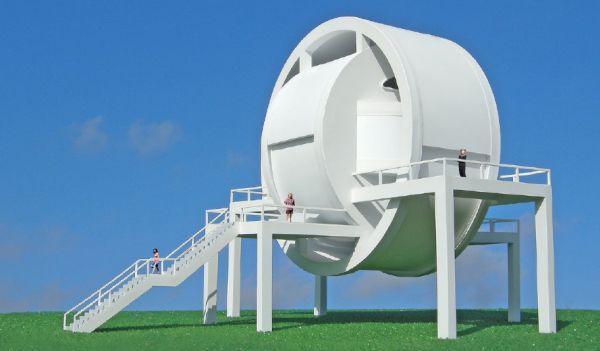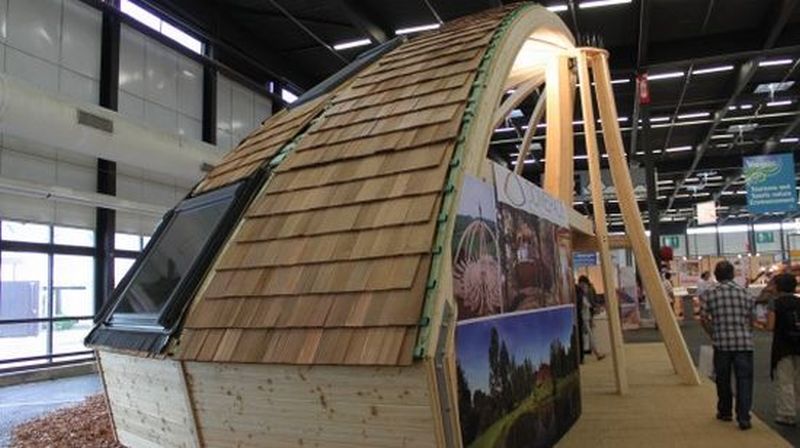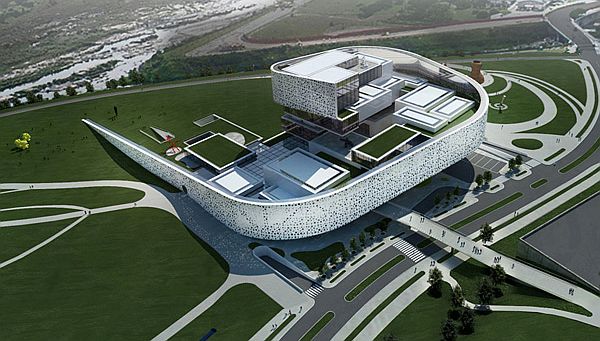The evolution of eco architecture has always been defined by innovative considerations of spatial elements. While sustainability is the major theme of such buildings, it is the efficient usage and distribution of spaces that plays a part in the overall success of a structure. Moving along this structural progression, designer Michael Jantzen has once again come forth with one of his avant-garde spatial designs. Christened as the ‘Transmutation Pavilion’, this conception comprises of an originative public functional art building, with a plethora of sustainable features.

Coming to the structural attributes, the interesting form of the building consists of three interlocking cylindrical components, supported by four horizontal planes. The whole set up is furthermore braced by a system of eight vertical columns. According to the designer, this structural bearing epitomizes the way a built environment reacts to the user’s intrinsic needs. In relation to this, the complexity of the setting creates an assortment of varied spatial elements. For example, the cylindrical forms are nigh incorporated inside each other, but with different angular directions. In view of the dynamic essence of the building, each of these cylindrical components is fitted with two large, overlapping, sliding curved panels. These panels can be closed, opened and altered to different positions, thus accentuating upon the energetic volumetric nature of the structure (from the user’s perspective).
The inherently dynamic attribute of this conception is embodied by the transformative play of such spatial elements like the panels. But the ingenious notion is not just limited to the scope of visual and overall form change. As a matter of fact, it is also related to the inside (and outside) view provided by the ‘transmuting’ art building. Like, as the panel facades change their angle or position, the user is induced to take a more unconventional path of circulation through the building (to watch out for a better or interesting view). But even when they are traversing across the interior, there will be specially built motion sensor components embedded in the glass floor that would monitor the user’s movement. And according to the data fed by this collective system of sensors, the intelligent building (by its cylindrical components) will automatically change its pattern. This will result in a more varied and exclusive viewing experience, on the part of the user.
Coming to the point of accessibility, the building is equipped with a collective system of staircases, connecting the various zones of the structure. Of course, other than providing accessibility, such stair components will also allow a myriad of vantage points (throughout the building) for the user.
And finally, coming to the important factor of sustainability, we should remember that the Transmutation Pavilion thrives to be a fine specimen of eco architecture. In relation to this, the building will be wholly powered by clean and ‘green’ solar energy. The motional pattern of the building is to be juiced up by a central solar array, which in turn is mounted on one of the large curved panels. And in a conscientious move, the designer has also thought of an adroit mechanism, which would allow the excess energy (produced by the building) to be supplied to the main electricity grid.
Thanks: Michael Jantzen




